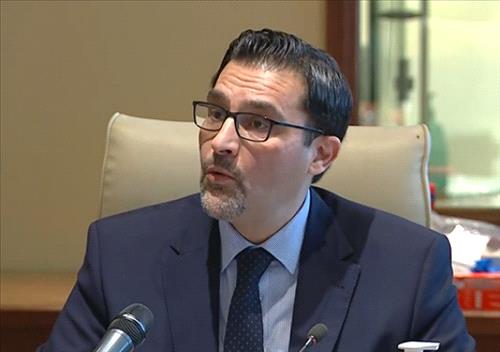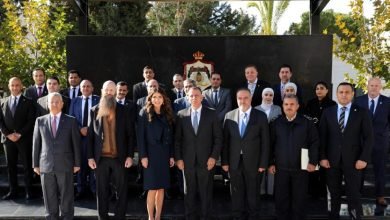
By: Nedal Zubeidi
Jordan Daily – In Amman, traffic is not merely a daily strain – it is a chronic condition that has shaped the rhythm of the city for years. Against this backdrop, the Bus Rapid Transit (BRT) emerged as both an experiment and a promise. Some dismissed it as a costly illusion, others hailed it as a long-awaited solution.
When I spoke with former Minister of Transport Dr. Khalid Saif, I found his stance strikingly clear: the BRT is not the complete cure, but it is an essential part of the treatment. It is the beginning of a road, not the end of it.
Saif insists, however, that the project remains unfinished. The sleek buses gliding along their dedicated lanes are only half the story. The other half- the one that gives the project its real meaning- is what he calls the “feeders”: a network of smaller buses meant to carry passengers from their neighborhoods to the main BRT stations. Without this web of connections, the project feels incomplete. In most modern transport systems, no citizen is expected to walk more than two or three hundred meters to reach public transport. That principle, he argues, has yet to be fulfilled in Amman.
Still, the numbers speak volumes. In its first year, the BRT carried about four million passengers. Last year, the figure leapt to over twenty-two million, and this year it is expected to surpass thirty million. These are not just statistics; they are signs of a cultural shift. Jordanians, long wedded to their private cars, are beginning to see public transport as a viable alternative, Saif noted.
The role of the private sector in this transformation, Saif believes, is indispensable. Jordan has already seen successful partnerships- the Queen Alia International Airport under a BOT arrangement, and the Aqaba Container Terminal. Yet he warns that private involvement must be more than financial engineering. The system’s workers must also benefit; the partnership should build an ecosystem, not just infrastructure.
And what of the ever-present question: could Amman one day have a metro? Saif does not dismiss the idea, but he is sober about the obstacles. The cost would be staggering, the terrain unfriendly, the existing infrastructure inadequate. Many world capitals built their metro systems in the 1940s and 1950s; the price of our delay is now unimaginable.
Moving from urban transport to a broader national concern, as logistics expert, he sees the greater priority lies elsewhere, in what he terms “logistic security.” Just as countries speak of food security or financial security, Jordan must begin speaking of its logistic security. With a strategic location at the heart of the Middle East, Jordan could serve as a logistics hub for the region. But without a national railway linking the Port of Aqaba to the Saudi border- and by extension to the Gulf’s developed logistics networks- Jordan risks being sidelined in an increasingly competitive regional race. Ports and supply chains in the UAE and Saudi Arabia are advancing rapidly. Without a backbone of rail to move goods at low cost, Jordan cannot truly capitalize on its geography.
The lesson is stark but also hopeful. Transportation is not a minor service; it is the enabler of everything else- the economy, the daily life of citizens, even the shape of the city itself. The BRT has shown that change is possible, that with reliable schedules, clean buses, and affordable fares, people are willing to rethink their habits.
Amman does not need slogans; it needs a full network. Perhaps we will not see a metro soon, but we can build steadily- starting with a rapid bus, then a feeder system, and eventually a national transport network worthy of the country’s ambitions. The BRT, unfinished as it is, has opened the door. The question now is whether we will walk through it.

